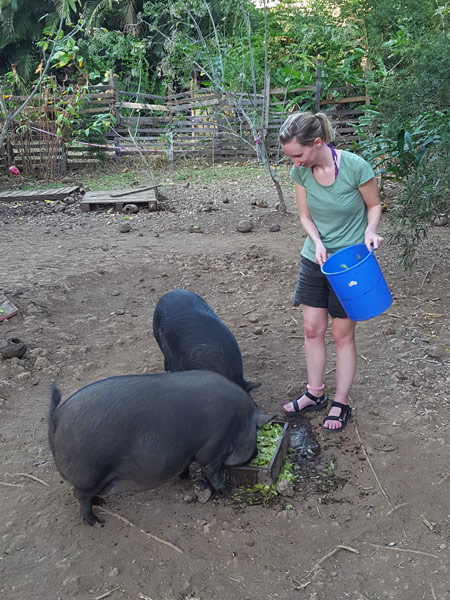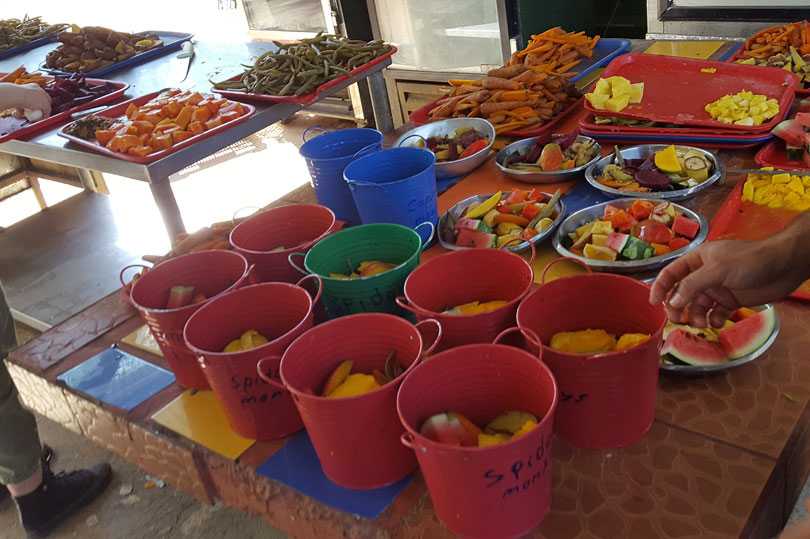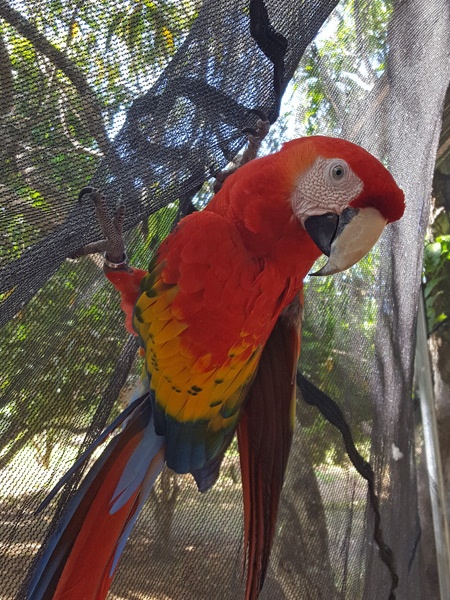Volunteering in Costa Rica
I’ve always had a fascination for the animal kingdom, so being rich in nature and wildlife, Costa Rica has been on my travel wishlist for a while. Costa Rica covers just a tiny proportion of our planet yet is host to 5% of the world’s biodiversity, something that the nation is particularly proud of. And you don’t have to venture too far to see some of its native creatures. Just relaxing by the pool at our hotel in Manuel Antonio we managed to spot lizards, capuchin monkeys and various birdlife, including toucans!
As someone developing a keen interest in all things zoological, I decided that I would like to combine my sightseeing holiday with volunteer work, so spent a week at the Costa Rica Animal Rescue Center, around 20-30 minutes from Juan Santamaria International Airport.

We were picked up by a driver at the airport, along with 3 other jetlagged Brits. We arrived at the centre late afternoon and were shown to our 12 bed dorm. There are around 5 dorms in total and most were almost full, accommodating over 50 volunteers in total – alot more than I was expecting!
We met the owner Bernal and his howler monkey, Feluco. Feluco is an orphan whose mother was killed by a dog. Because he lost his mother at such a young age, his immune system is very weak. He also has a cleft pallet which gives him breathing problems. Feluco would stand no chance of survival out in the wild but luckily he is very well looked after at the centre. We learnt more about the other animals and the centre itself, but I will tell you more about the story of the rescue centre in another post.

The next morning we were given a tour of the centre which at the time of our visit is home to an assortment of birds including parrots, owls, a peacock, a curassow and some chickens and ducks. There are also pigs, goats, 3 types of monkey (howler, spider and capuchin), two and three toed sloths, a tortoise, porcupine, marmoset, opossum, hedgehog, squirrels, two kinkajous, an olingo and a couple of pet dogs. There was also a toucan but as it was going to be released back into the wild, only the resident biologist was allowed anywhere near it.

As volunteers, the only animals besides the toucan that we were not responsible for were the spider monkeys, capuchin monkeys and some of the baby creatures inside the animal hospital.

For your first two days volunteering, you must shadow someone and not enter the enclosures, with the exception of the goats and pigs. I must admit being a little wary of Oscar the male goat, but the mama and two baby goats were sweet. I did enjoy going into the pig pen and we were encouraged to go visit the pigs to stop them from getting lonely.

A typical day
7am – Breakfast in the common area.
8am – Meeting in the common area – this is to go over any points of discussion and extra duties (one day every single person got involved in shifting a spider monkey cage, for example). Each volunteer is put into one of five teams and then each team has set tasks for the day on a morning and afternoon rota. The rota is repeated every 5 days so everyone has a chance to be involved with different animals and different aspects of the work.

A typical day may go something like this…
AM
- Clean enclosures and supply fresh food and water for: the goats, the sloths beside the goat enclosure (aka The Goat Sloths), the owls, peacock, curassow and parrots.
- Collect grass for the goats.
- Tidy the garden.
The morning shift would usually last until 11am.

12 noon – Lunch in the common area.
Free time.
1.30pm – Meeting in the common area.
PM
- Clean enclosures and supply fresh water for the porcupine, hedgehog, squirrels, opossum and teen sloths.
- Feed the squirrels.
- Give the porcupine, hedgehog and opossum their snacks at 4pm.
- Give the teen sloths their branches at 5pm.
- Feed the porcupine, hedgehog, opossum and teen sloths at 7pm.

The afternoon shift would usually last until 4pm. Of course, every day was different as if your team were responsible for some of the nocturnal animals that day, you had a few jobs to do after 4pm, but who’s complaining when you have a kinkajou climbing on your head at the 7pm feed! You aren’t supposed to touch the animals but an excitable kinkajou did decide my head looked like a fun place to climb!

6pm – Dinner.
Free time.
10pm – Lights out.
There was a swimming pool and some hammocks for chilling during down time. The living conditions were basic and I didn’t mind the cold showers and sharing a dorm, however the sleeping wasn’t easy due to the various, and quite loud, noises of the local wildlife and vehicles on the nearby road. My body also ached for somewhere comfortable to sit – yeah yeah I’m an old granny alright!
The people at the rescue centre, both staff and volunteers, were really friendly and the work felt very rewarding. As someone who volunteers at a cat rescue centre close to home, it was a great learning experience to be so close to the native animals of a different country, and I could tell that the other volunteers felt the same.

I would like to thank Costa Rica Animal Rescue Center for being the wildlife warriors that they are and for allowing me to play a small part in their story.
And I would urge anyone who wants to make a difference, no matter how small, to get out there and do it!
Pura Vida!
If you would like to help the CRARC you can donate money, supplies or your time by following this link. And for more information, including the best time to visit Costa Rica there are some great resources online!





